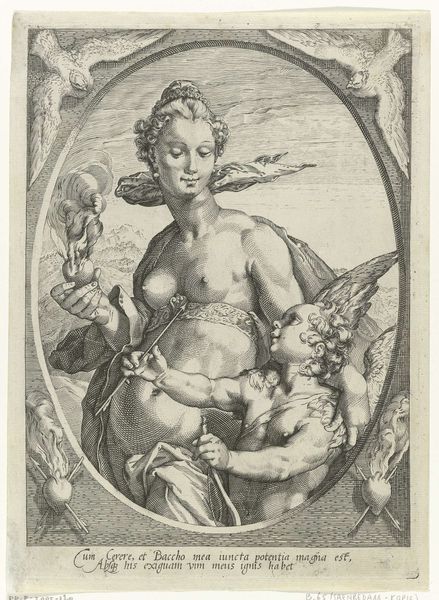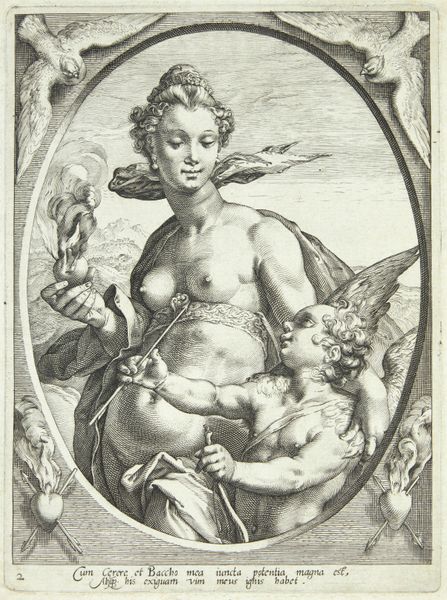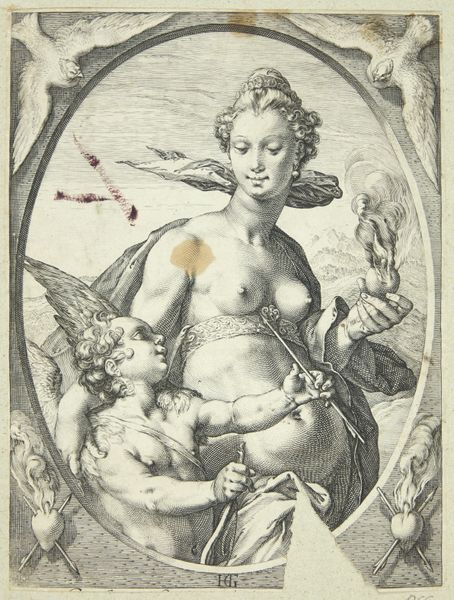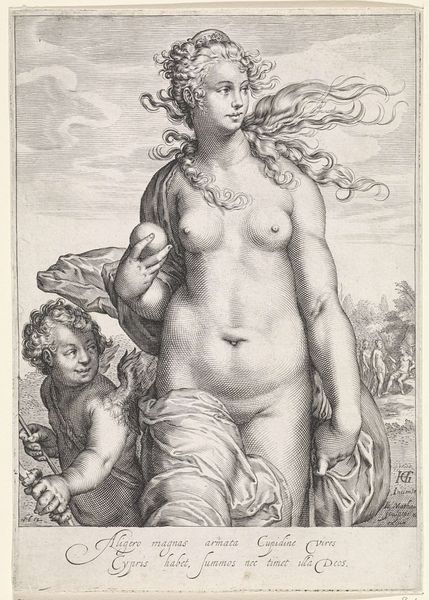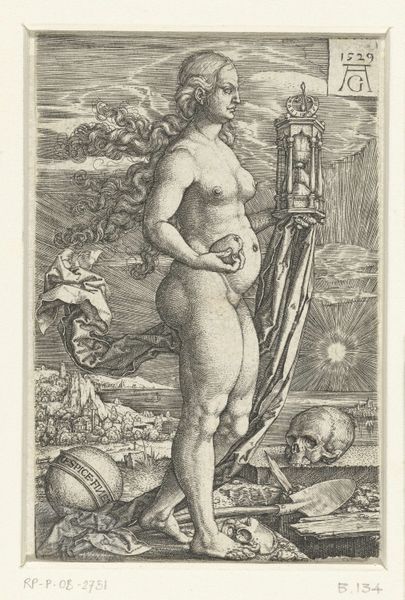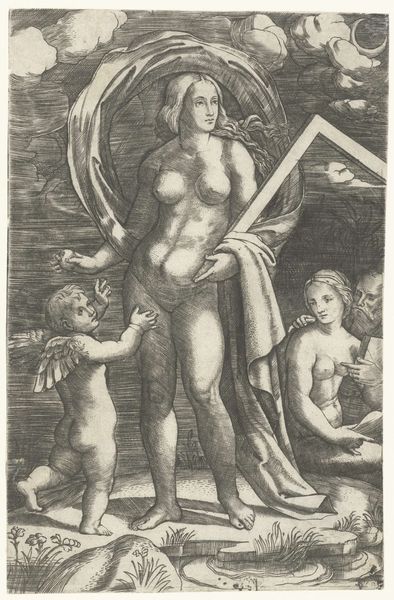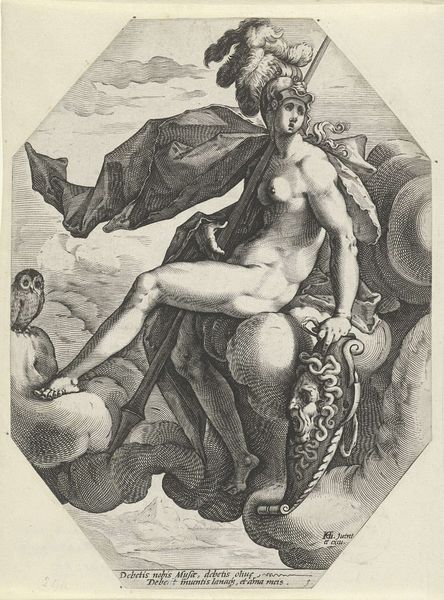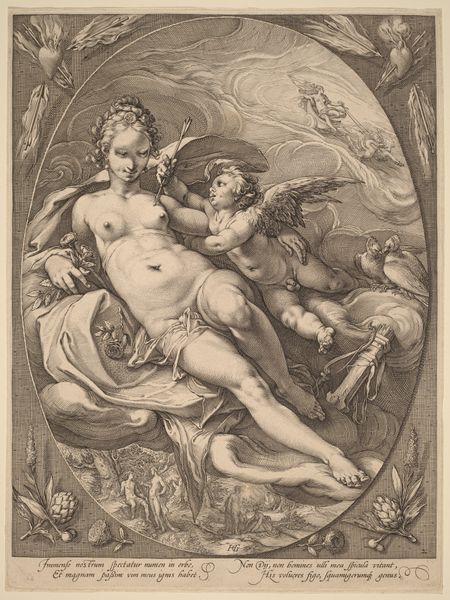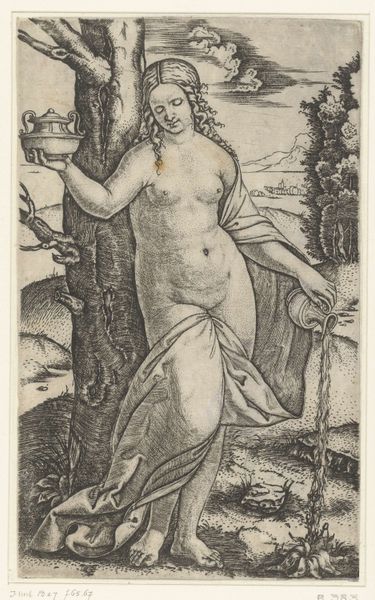
print, engraving
#
allegory
# print
#
figuration
#
11_renaissance
#
northern-renaissance
#
nude
#
engraving
Dimensions: 207 mm (height) x 143 mm (width) (plademaal)
This print of Venus and Cupid was made in the late 16th or early 17th century by Jan Saenredam, using the technique of engraving. Think of the engraver as a kind of mechanic of the image. Using tools of steel, the artist incises lines into a copper plate. These lines hold ink, which is then transferred to paper through the pressure of a printing press. The material qualities of the print – its crispness, its fine detail – are all due to this intense, painstaking process. Look closely, and you can see how Saenredam has used a vocabulary of marks to describe the forms of Venus and Cupid: short, dense hatching to create areas of shadow, and longer, flowing lines to suggest the contours of their bodies. The engraver needs to be a master not just of representation, but of labor. In its own time, this image would have been seen as both art object and commodity, traded and collected by connoisseurs. By understanding its making, we can appreciate the tremendous skill involved, and also the print’s place within a wider world of production and consumption.
Comments
No comments
Be the first to comment and join the conversation on the ultimate creative platform.
